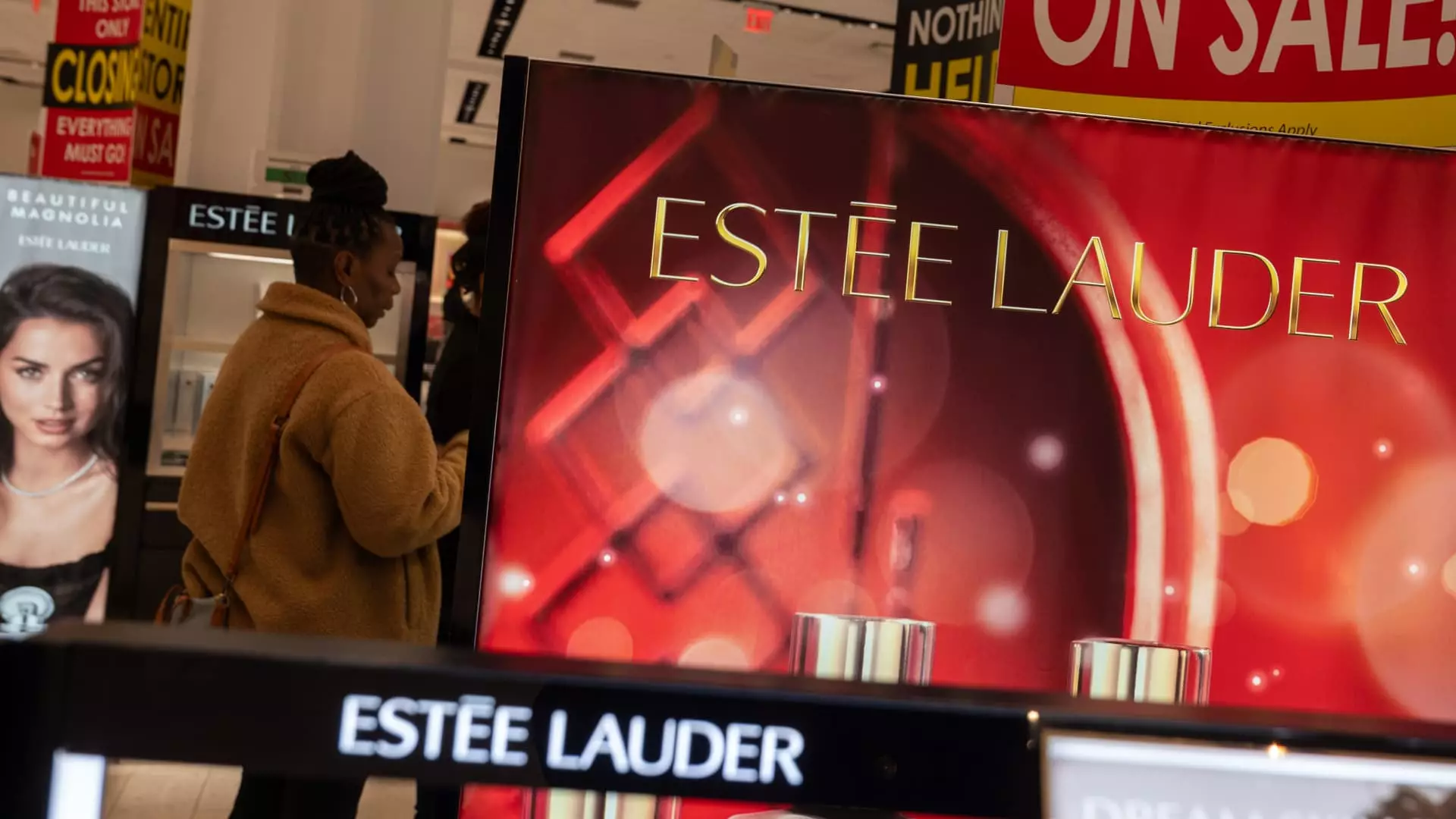The beauty sector has faced significant turmoil over the past week, with several notable companies reporting substantial stock losses and disappointing earnings. E.l.f. Beauty and Estee Lauder, two of the industry‘s key players, have particularly embodied this decline, which has raised eyebrows among investors and analysts alike. E.l.f. Beauty witnessed its worst performance since August 2018, with a staggering drop of nearly 29% in a mere five days. Although the brand posted revenue that exceeded expectations for its third fiscal quarter, it nevertheless saw a shortfall in adjusted earnings per share and subsequently lowered its sales forecast for the year. This downward revision is indicative of broader trends within the cosmetics market.
In an interview with CNBC, E.l.f.’s CEO, Tarang Amin, pointed to a troubling trend—a 5% decline in the cosmetics sector during January, attributing this to lingering effects from holiday discounting and diminishing online engagement with beauty products. This insight offers a glimpse into the changing consumer landscape, where the thrill of seasonal promotions appears to have waned, leaving companies grappling with overstocks and decreased demand. Agora Financial analysts have taken note and subsequently downgraded E.l.f. Beauty’s stock to neutral, emphasizing the need for a more cautious approach to investment in this volatile environment.
Similarly, Estee Lauder reported a daunting 22% drop in stock value this week, marking its worst performance since November. The company announced plans to lay off between 5,800 and 7,000 employees by the end of fiscal 2026, a drastic move that reflects its struggle to maintain profitability amid declining travel retail demand in Asia. Despite reporting positive second-quarter revenue and earnings, the overall picture was marred by this grim outlook. CEO Stéphane de La Faverie candidly acknowledged that the company had “lost our agility,” highlighting a struggle to harness growth opportunities effectively.
It wasn’t just E.l.f. and Estee Lauder that faced hurdles; other companies such as Ulta Beauty and Coty also experienced significant stock pressure, with declines of 9% and nearly 8%, respectively. For Ulta, this marks its most challenging week since April. Notably, recent comments from E.l.f.’s leadership alluded to “softness” in sales at Ulta, further signaling potential struggles within retail partnerships.
The beauty industry, akin to various sectors facing modern challenges, is also contending with geopolitical issues, notably tariffs that could squeeze profit margins. China’s announcement of tariffs on specific U.S. imports has raised concerns, particularly for companies like E.l.f. Beauty, which produces around 80% of its products in China. While there is relief regarding the scale of the tariffs, it’s a stark reminder of the complexities and vulnerabilities that underpin global supply chains in the beauty sector.
The recent downturn in the beauty sector serves as a critical reminder of the challenges that industry players face in an evolving market. With consumer preferences shifting and economic pressures mounting, companies must pivot to recalibrate their strategies to align with new realities. The dialogue surrounding agility, adaptability, and innovation will be crucial as brands strive to regain their footing in the face of adversity. As the situation develops, the beauty industry’s ability to respond to these challenges will determine not only their immediate survival but also long-term viability.

